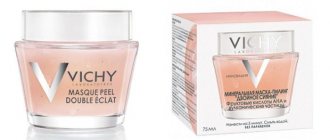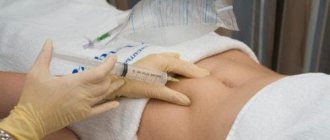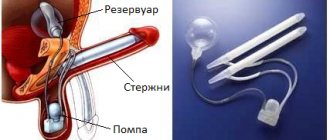The expert recommends...
Daniel Flemming (Melbourne, Australia) is President of the Australian College of Plastic Surgery. Dr. Flemming is a recognized expert in the field of augmentation mammoplasty. His clinical experience includes more than 3 thousand breast augmentation operations. Based on his many years of experience (over 40 years), as well as the experience of his renowned colleagues, Dr. Flemming recommends the use of polyurethane-coated silicone implants . This will be discussed in this article.
Clinical practice confirms that the use of polyurethane foam-coated breast implants for breast augmentation significantly reduces the number of capsular contractures, in contrast to the use of smooth and textured implants. It has also been proven in practice that polyurethane implants are characterized by a minimal number of displacements and rotations - therefore, the use of anatomical implants virtually eliminates the risk that the implant will turn over or move. Many years of observations have proven that the use of polyurethane-coated implants is safe for health .
In rare cases (~1%), a rash may occur, which goes away fairly quickly. The likelihood of other complications is no higher than when installing other implants (with a textured, smooth surface).
Classification of breast implants by shape
Currently, there are two main forms of endoprostheses - round and anatomical.
Round implants, as the name implies, have a rounded shape, due to which they give the breasts not only the desired volume, but also an attractive appearance, creating the “push-up” effect so beloved by many ladies.
Round models are most often used to correct ptosis, asymmetry, or when it is necessary to increase the bust by several sizes at once.
A good example of such products is the Motiva Round implants. The products have a pronounced hemispherical shape, are very soft and elastic, and are closest in structure to natural breasts. They consist of a high-strength shell and an innovative gel with a “memory effect”. Thanks to the gel filler, the products completely take the shape of the breast and behave naturally during active movements and in any body position.
And the main advantage of all round prostheses is that when they are displaced, the bust retains its natural shape and appearance. Visually, the displacement is almost imperceptible; there are no contours, asymmetry or other signs of rotation visible through the skin.
*Photos before and 4 months after breast augmentation with Motiva 360 ml round implants
Anatomical implants have a teardrop shape - they are round at the bottom and slightly pointed at the top - exactly like the natural shape of the mammary glands, hence their name. Due to this, the breasts look more natural and natural. “Anatomy” is ideal when it is necessary to restore the aesthetics of the breast after a mastectomy or to enlarge initially small breasts.
The main disadvantage of such products is that when displaced, the contours of the prosthesis clearly appear under the skin, the breast becomes unnatural. Sometimes, it is impossible to hide the external symptoms of displacement even with the help of a bra. But wearing underwear with a “push-up” effect with anatomical prostheses is highly not recommended. Such bras can cause gradual deformation of the implant.
By the way, in addition to round breast implants, only Motiva has ergonomic implants - these are round implants, 100% filled with highly cohesive gel. Due to their shape, they are not afraid of rotation, and even if this happens, the shape of the new breast is not deformed. And the unique gel inside the implants ensures that the movements of the natural breast are repeated when the body position changes.
Implants with polyurethane coating
The capsule around smooth and textured implants is formed from collagen fibers that are aligned end-to-end. When a stimulus appears, the fibers around the implant contract alternately, causing concentric compression.
Why does polyurethane foam reduce the risk of capsular contractures?
When using polyurethane foam-coated implants, the foam is integrated into the thickness of the capsule. Foam is a 3D matrix or lattice and the fibers envelop its structure. In this case, the fibers are not connected end-to-end, therefore, they cannot concentrically contract one after another around the implant and cause a compressive effect.
This explains the low incidence of capsular contractures. A strong connection is created between the capsule and the implant. Over time, the implant does not move or turn over.
Manufacturer's warranty and service life
The manufacturer provides a lifetime warranty on its products. All materials have a European certificate of conformity. If the implant shell ruptures, a free replacement with a new one is provided. The service life is not limited, however, if within 10 years after the operation the material is displaced or a contracture is formed, then in this case repeated free intervention is provided in order to eliminate the consequences. Implant replacement is also provided.
The Implants of Excellence warranty program confirms the quality of the products. Documentation is provided to each client.
Safety of polyurethane implants
Implants with a polyurethane foam shell are absolutely safe .
Numerous studies and a huge number of operations performed show that the level of complications in the worst case does not exceed the number of complications when using implants of all other types of surfaces. At the same time, short-term rash, observed in 1% of cases, is not taken into account. 15-year studies showed the incidence of capsular contractures to be no more than 1%, during the observation of patients with implants installed under the muscle.
Contraindications to dental implantation
Unfortunately, it is not always possible to install implants. Contraindications to dental implantation include relative and absolute.
Absolute conditions include the presence of serious chronic diseases:
- diabetes mellitus,
- severe liver and kidney diseases,
- oncology,
- tuberculosis (in open form),
- immune diseases,
- cardiovascular,
- nervous diseases.
In addition, contraindications include childhood, allergic reactions to anesthetics, diseases that impair blood clotting, and bruxism (teeth grinding).
Relative (or temporary) contraindications include:
- pregnancy and breastfeeding,
- caries, inflammatory diseases of the oral cavity,
- malocclusion,
- smoking, alcoholism and drug addiction,
- infectious diseases,
- taking immunosuppressants.
At the same time, it should be noted that many diseases in remission allow implantation to be carried out by choosing the right technology and medications.
What are the real disadvantages?
In 1% of cases, a short-term rash may occur in the second week after implantation. The duration of this effect is no more than 2 weeks. Treated symptomatically with antihistamines and steroids.
Removal is sometimes a little difficult, but is quite doable. When removing implants more than 3 days after installation, when the foam has already begun to integrate into the capsule, a capsuloectomy is required for removal. In case of infection, the capsule should not be removed in all cases, since treatment with antibiotics usually allows for a second operation after 3 months. For late infections with atypical mycobacteria, capsuloectomy is indicated.
Implants of this type do not decrease in volume in the established bed and over time remain in the established place, as on the day after surgery.
How to reduce pain after implantation?
It is necessary to understand that after surgery the body needs time and energy to recover, so it is important to carefully listen to the doctor’s recommendations and strictly follow them - refuse solid food during recovery, chew on the other side of the jaw, do not drink alcohol or smoke, do not go to the sauna and a sauna in the first month after implantation.
You must brush your teeth carefully, using a soft-bristled brush, try not to injure the tissues of the oral cavity, avoid physical impacts (impacts, shocks), observe good hygiene, promptly use medications (including antibacterials) prescribed by your doctor, and do not take other medications. without consulting a doctor.
To reduce pain, you can use cold lotions (with ice) in the first hours after implantation. They are used no longer than 20-30 minutes to avoid tissue hypothermia.
Regularly (especially after eating) rinse your mouth with water and antiseptic solutions (for example, chlorhexidine-based).
Healing gels (such as Metrogyl Denta) or cotton swabs moistened with an antiseptic solution (chlorhexidine) can be applied to the area of the gums where the sutures are located.
You can use analgesics (ketanov, paracetamol, ibuprofen, nimesil), observing dosages and intervals between doses. Their effectiveness is enhanced by drinking plenty of fluids.
Among folk remedies, it is allowed to use a decoction of chamomile, eucalyptus, calendula, plantain, as well as a pulp of fresh aloe leaf. You can rinse your mouth with decoctions (or tincture diluted in water) or moisten cotton swabs and apply to the sore spot.
Attention! Any means are used only as prescribed by a doctor or in agreement with him! Carefully follow the requirements and recommendations of the implantologist and do not self-medicate. And if the pain is too severe, consult a doctor.
Use in repeated operations
The installation process is quite predictable, which helps in correcting implant displacement and synmastia (lack of interbreast distance). No cases of rotation of the anatomical implant with polyurethane foam were observed.
When diagnosing a patient with capsular contracture of 3-4 degrees, the installation of polyurethane implants was recognized as the best solution. This reduces the risk of re-contracture to 2%. A simple capsuloectomy is necessary because otherwise, the foam will not be able to adhere to the tissues and the risk of capsular contracture increases to 50%.
All stages of breast augmentation surgery planning are very important to optimize your breast augmentation results. The choice of implant surface is extremely important.
Practice shows that a sharp reduction in the number of complications and re-interventions depends on the correct choice of implant surface . They also show that you can significantly reduce displacement, which is the second most common complication and indication for reintervention. Undoubtedly, when patients know this, they decide in favor of polyurethane-coated implants.
If you were in the patient's shoes, you would undoubtedly want to know about this possibility. If the outcome were different, the operating plastic surgeon would be guaranteed to hear from you the question: “ Why didn’t you tell me about polyurethane-coated implants? »
Honestly about the disadvantages of implantation
Despite the significant advantages - restoration of the chewing load on the bone and stopping the atrophy of bone tissue, the feeling of the implant as if it were your own teeth, excellent appearance, durability and reliability, no need to grind down adjacent teeth - implantation also has its own disadvantages, which we will consider in detail.
1. Pain after implantation. Installation of an implant (or implant - everyone pronounces a foreign word differently) is a surgical operation with all the ensuing consequences - including pain for some time after the operation. During the normal course of the process, the pain goes away within a few (3-5) days.
2. Possible complications. One of the most serious complications is material rejection - the body does not perceive a foreign object and tries to get rid of it. Inflammation, pain, swelling, implant mobility, fluid secretion and even increased body temperature. To be fair, let’s say that the probability of such an outcome is very low - it is only 2-3% of the total number of people who have implants installed.
3. Presence of contraindications. Implantation, like most all medical procedures, has contraindications – situations in which it is impossible to install implants. These include: age under 20 years, diabetes mellitus (type 2), hepatitis, AIDS, other immune and cardiovascular diseases, bleeding disorders, bruxism and some others. Some of the contraindications can be circumvented, others cannot.
4. Long installation process. The installation itself can be carried out in literally 1-2 visits to the dentist, but the total period of engraftment of the artificial root can take from 6 months to 1-2 years. But in case of a favorable outcome (and this, we remind you, is 97-98% of all cases), you will have the same tooth as before, which will serve you without any problems for 10-20 years, or even more.
5. Caring for implants is more complicated than regular teeth, although not by much. They need to be cleaned more thoroughly, and you also need to regularly visit a dentist, who should monitor the condition of the implant and take timely measures if any problems suddenly arise.
6. The cost of implantation is very high. Prices for installing one implant start from 18,000 rubles - and this does not include the cost of the crown. In other clinics (especially in the capital), the total cost of a new tooth can exceed 100,000 rubles or more.
Still, the pros outweigh the cons in most cases. Otherwise, implantation would not be used so widely, and this technology, for a moment, is already more than 55 years old. The first operation was successfully performed by the developer of this technology and the founder of Nobel Biocare (which is still a leader in the scientific development and production of implants) Per-Ingvar Brånemark back in 1965.
Since then, millions of operations have been performed all over the world, several more large companies have appeared producing implants, instruments and components, implants of a more advanced form and from the latest, biocompatible materials have been proposed, the technology has been developed to perfection, and research into the consequences of implantation has become the most extensive nature, including many thousands of patients observed over decades. But still, let’s return to the disadvantages of implantation and analyze them more carefully.









